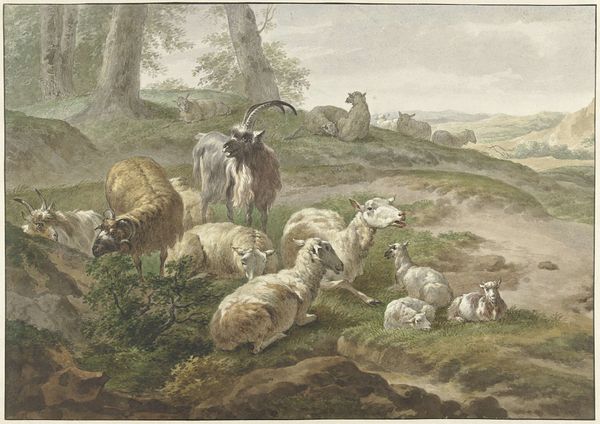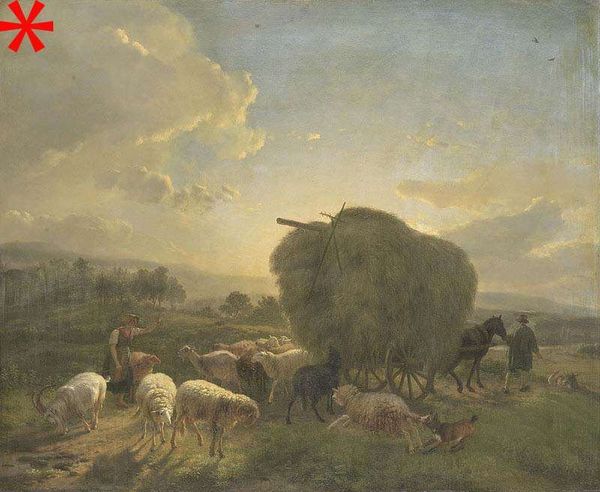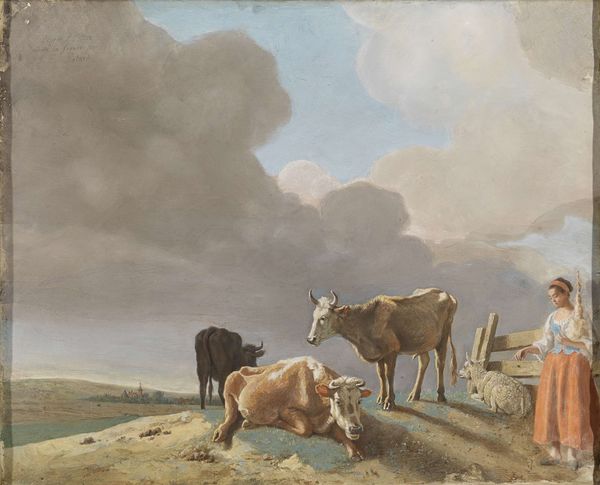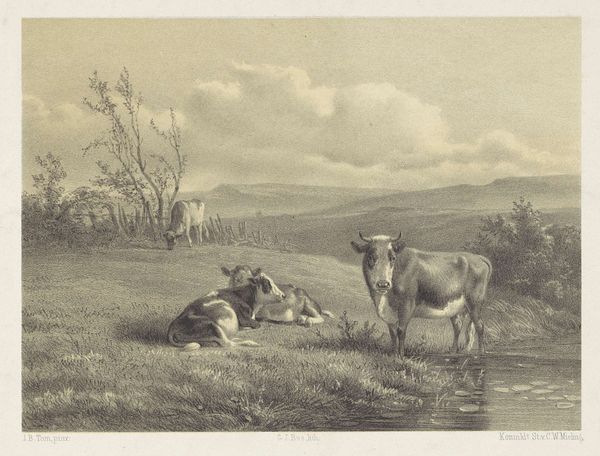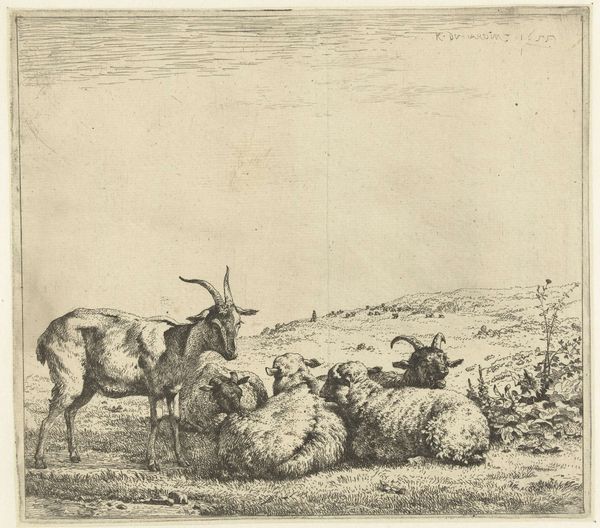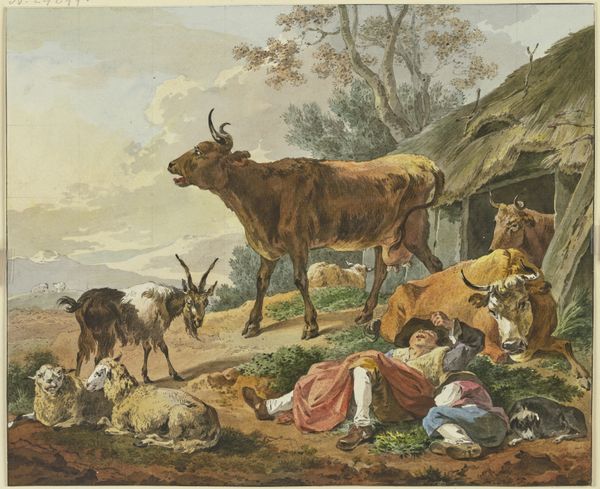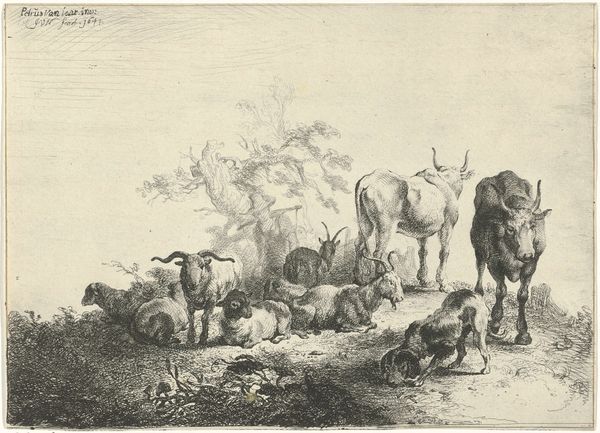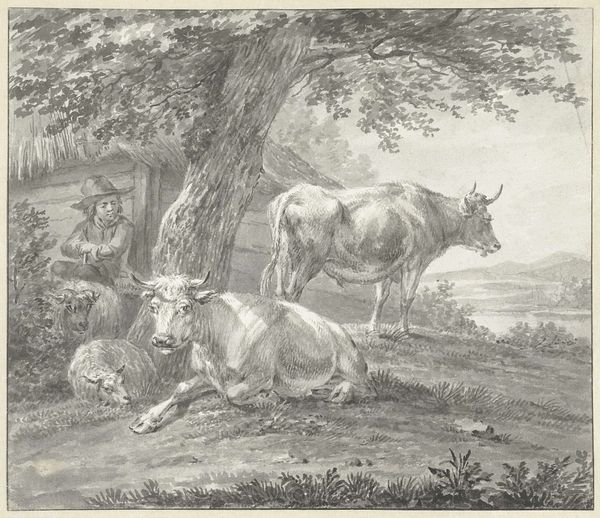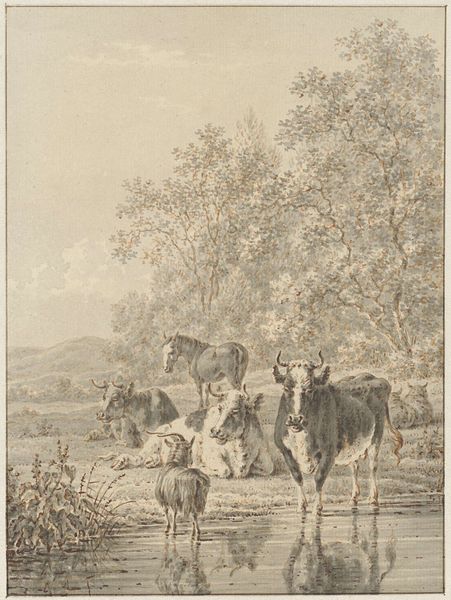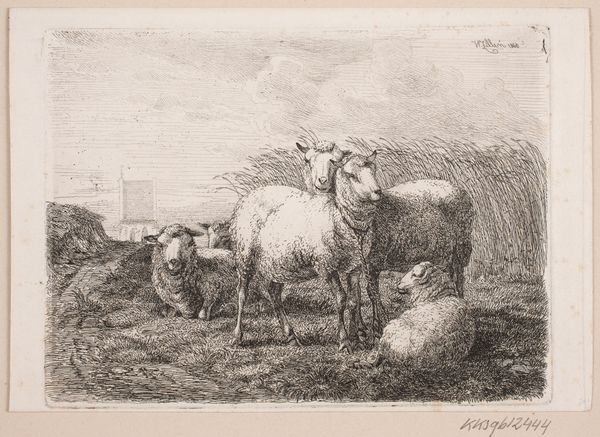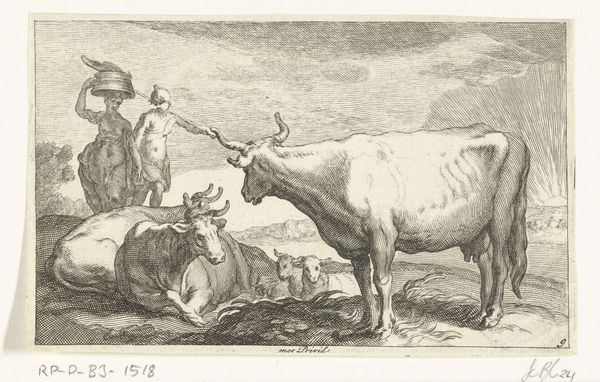
watercolor
#
animal
#
landscape
#
watercolor
#
coloured pencil
#
watercolour illustration
#
genre-painting
#
watercolor
#
realism
Dimensions: height 205 mm, width 259 mm
Copyright: Rijks Museum: Open Domain
Curator: So here we have "Landscape with Donkey, Goat, and Sheep," a watercolor, likely created sometime between 1766 and 1850 by Dirk van Oosterhoudt. Editor: It feels… pastoral. Not just because of the animals, but there’s this overriding sense of quietude, of animals in repose within a hazy, idyllic landscape. Curator: Precisely. I'm particularly drawn to the symbolism of these animals, each carrying different cultural weight across centuries. The donkey, often associated with stubbornness but also humility, stands guard over the flock. Editor: The flock, symbols themselves of community and dependence, which leads me to think about land ownership. Who benefits from this pastoral scene, this carefully constructed representation of rural harmony? Were these working animals, laboring in service of agricultural practices and human needs? What were the economic realities for marginalized folks, like women and peasant communities during that historical period? Curator: The artist seems more focused on capturing an archetypal scene than on critiquing a specific economic reality. Genre paintings often reflected idealized versions of everyday life and invoked nostalgic notions, almost as if they had a cultural imperative. But it's fascinating how you're prompting us to consider the socio-economic forces beneath that surface of serenity. The use of watercolor as a medium also points towards an art made more for personal reflection and appreciation, rather than grand pronouncements or political statements. Editor: And yet, by omitting those political statements, by naturalizing social hierarchies within a pretty scene, isn't there an act of subtle reinforcement? The donkey stands over, but do they protect, or simply oversee their resources? Who holds authority? These are questions artists were posing within the Western Canon even at the time through portraiture and genre-based subject matter. Curator: True, these kinds of tranquil landscapes became a cultural touchstone; their simplicity speaks to the longing for an agrarian existence, resonating within an era experiencing immense shifts through industrialism. Maybe the image, at a symbolic level, speaks to those collective anxieties that are common to modernity. Editor: So, through careful composition and calculated visual rhetoric, this artwork invites a dual viewing. It's simultaneously a celebration and a romanticized shield against more challenging social issues of land ownership and exploitation. The visual arts frequently present a more nuanced cultural discourse of identity politics. Curator: It reminds us to look closely and be critical of our interpretations. Editor: Absolutely, this quiet watercolor opens a multitude of avenues for discourse!
Comments
No comments
Be the first to comment and join the conversation on the ultimate creative platform.
